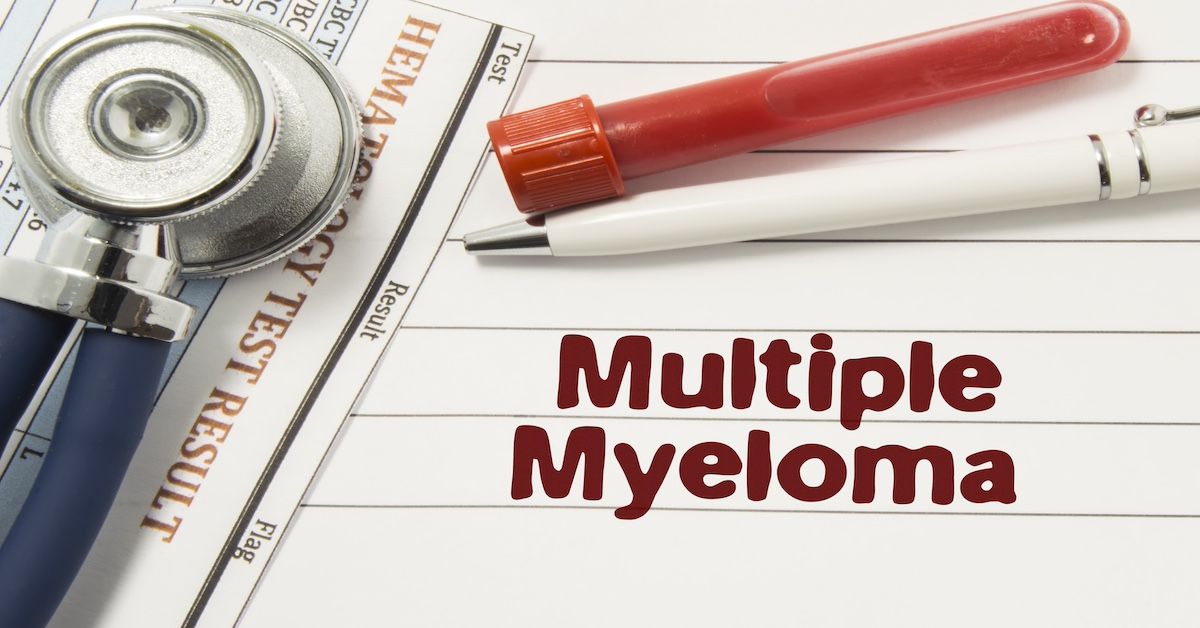- Center on Health Equity & Access
- Clinical
- Health Care Cost
- Health Care Delivery
- Insurance
- Policy
- Technology
- Value-Based Care
Model Based on EHR Parameters Can Predict 5-Year Multiple Myeloma Risk
Early identification of multiple myeloma could help clinicians intervene more swiftly.
Investigators say they have created a set of models that can use common electronic health record (EHR) data to predict a patient’s risk of developing multiple myeloma (MM) within the next 5 years.
The authors say such a risk-prediction model could be a valuable tool, since MM is often diagnosed late. The report was published in the British Journal of Hematology.1
While MM evolves over many years, only a minority of patients with pre-MM states like monoclonal gammopathy of undetermined significance (MGUS) or smoldering MM are diagnosed in a timely manner, the authors explained.
One reason for late diagnosis of MM is a lack of symptoms in the disease’s early stages. Another reason, though, is that there are no markers for screening the disease, according to the study authors.
“When MM is diagnosed, it is often already associated with organ damage,” they wrote.
The model has the potential to boost early detection of MM and contribute to a paradigm shift in the treatment of MM. | Image credit: shidlovski - stock.adobe.com

The study aimed to determine whether clinical and lab markers might be useful in developing profiles of patients at a high risk of developing MM. To find out, the researchers looked at EHRs of patients who went on to develop MM and compared their data to the EHRs of patients who did not develop MM. They then used computer models to see which variables and parameters were associated with a risk of developing MM.
The authors used a population of patients from Clalit Health Services, an Israeli health service organization. They identified 4256 patients between the ages of 40 and 85 years who were diagnosed with MM between 2002 and 2019. Patients with unconfirmed MM or precursor syndromes were excluded.
The authors then matched those patients on a 10:1 basis with healthy controls with similar ages, sexes, and geographic regions. For patients with MM, the investigators examined their EHR data from 5 years prior to diagnosis, looking at more than 200 different clinical and laboratory parameters. Next, the investigators used a machine learning model to create a predictive model that could identify patients likely to develop MM over the next 5 years. However, they found that the model they developed was highly complex and required significant resources and facilities.
“Thus, in order to implement the predictive model on other platforms, we developed a simplified model that could be used by any community physician with limited computational resources,” they said.
The simplified model used 20 variables. The authors found that patients who would go on to develop MM had higher erythrocyte sedimentation rates, lower hemoglobin, lower absolute neutrophil counts, and lower neutrophil/lymphocyte ratios. They also had higher globulins and ferritin, among other variables. The simplified model provided individual risk for MM within 5 years with an area under the receiver operator characteristic of 0.72.
The model has the potential to boost early detection of MM and contribute to a paradigm shift in the treatment of MM. The authors noted that previous research has suggested that patients with high-risk smoldering MM had a significantly longer time to progression when they were treated with an induction regimen of lenalidomide plus dexamethasone rather than the standard practice of observation until symptoms develop.2
The use of this type of model requires that a threshold line be set, the authors explained. Having a lower threshold would lead to more testing and more diagnoses of MM, but at a significant cost. A higher threshold would save costs but increase the odds of missing MM diagnoses. The authors also noted their model lacks external validation.
In the meantime, they concluded their findings offer an actionable tool for clinicians.
“[T]he models, especially the simplified ones, can already be implemented by every community physician,” they wrote.
References
1 .Mittelman M, Israel A, Oster HS, et al. Can we identify individuals at risk to develop multiple myeloma? A machine learning-based predictive model. Br J Haematol. Published online June 16, 2025. doi:10.1111/bjh.20136
2. Mateos MV, Hernández MT, Giraldo P, et al. Lenalidomide plus dexamethasone for high-risk smoldering multiple myeloma. N Engl J Med. 2013;369(5):438-447. doi:10.1056/NEJMoa1300439
